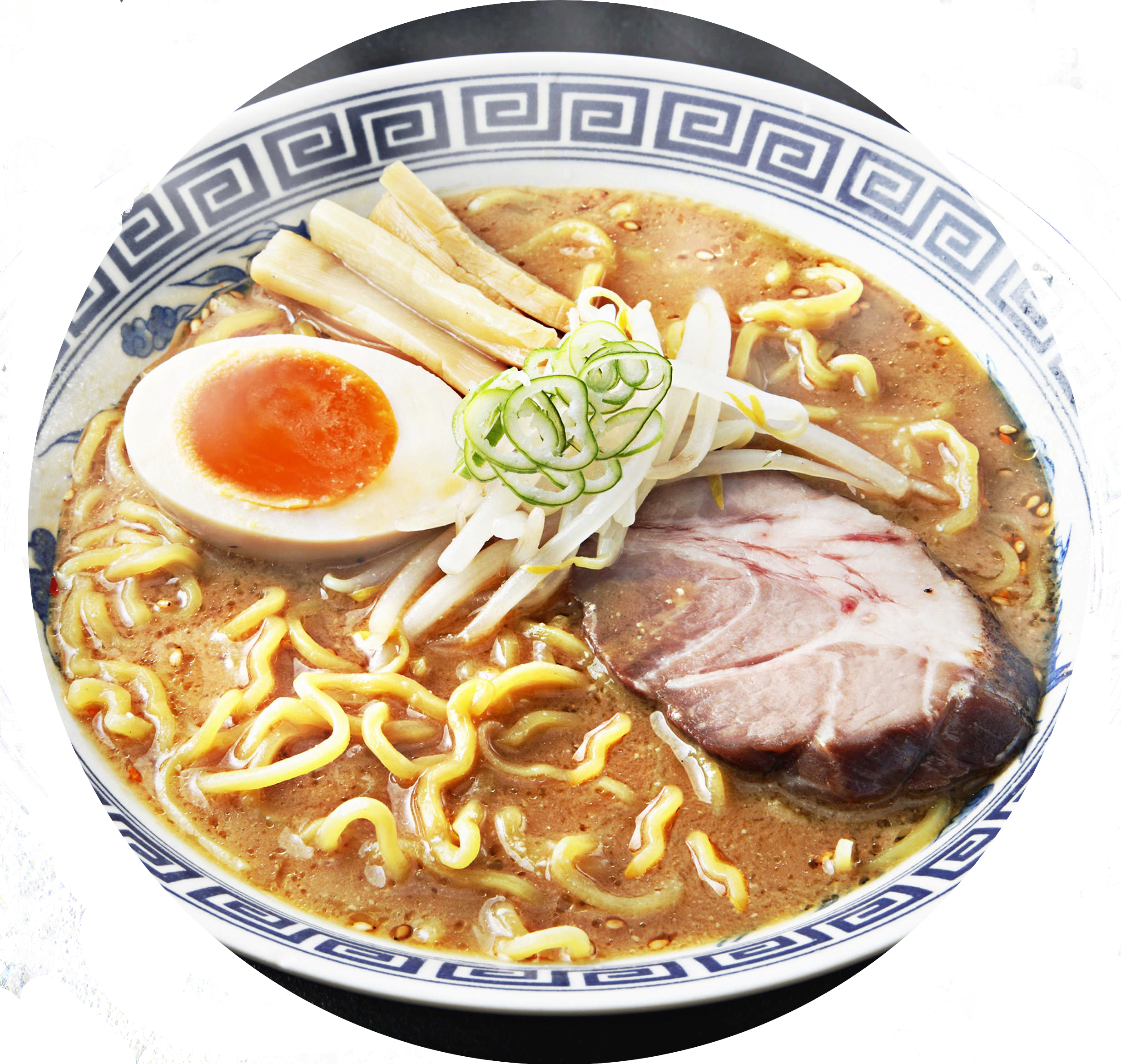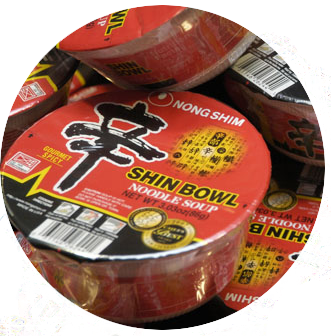About
Ramen is a Japanese noodle soup dish. It consists of Chinese-style wheat noodles served in a meat- or (occasionally) fish-based broth, often flavored with soy sauce or miso, and uses toppings such as sliced pork, dried seaweed, kamaboko, and green onions. Nearly every region in Japan has its own variation of ramen, from the tonkotsu (pork bone broth) ramen of Kyushu to the miso ramen of Hokkaido.
History
The origin of ramen is unclear. Some sources say it is of Chinese origin. Other sources say it was invented in Japan in the early 20th century.The name ramen is the Japanese pronunciation of the Chinese lamian. Until the 1950s, ramen was called shina soba but today chuka soba or just Ramen are more common, as the word shina has acquired a pejorative connotation.
According to ramen expert Hiroshi Osaki, the first specialized ramen shop opened in Yokohama in 1910. After World War II, cheap flour imported from the United States swept the Japanese market. At the same time, millions of Japanese troops had returned from China and continental East Asia from their posts in the Second Sino-Japanese War. Many of these returnees had become familiar with Chinese cuisine and subsequently set up Chinese restaurants across Japan. Eating ramen, while popular, was still a special occasion that required going out. In 1958, instant noodles were invented by Momofuku Ando, the Taiwanese-Japanese founder and chairman of Nissin Foods, now run by his son Koki Ando. Named the greatest Japanese invention of the 20th century in a Japanese poll, instant ramen allowed anyone to make an approximation to this dish simply by adding boiling water. Beginning in the 1980s, ramen became a Japanese cultural icon and was studied around the world from many perspectives. At the same time, local varieties of ramen were hitting the national market and could even be ordered by their regional names. A ramen museum opened in Yokohama in 1994.
Types of Noodles
Most noodles are made from four basic ingredients: wheat flour, salt, water, and kansui -- a type of alkaline mineral water, containing sodium carbonate and usually potassium carbonate, as well as sometimes a small amount of phosphoric acid.
The kansui is the distinguishing ingredient in ramen noodles, and originated in Inner Mongolia, where some lakes contained large amounts of these minerals and whose water is said to be perfect for making these noodles. Making noodles with kansui lends them a yellowish hue as well as a firm texture. Eggs may also be substituted for kansui. Some noodles are made with neither eggs nor kansui and should only be used for yakisoba as they have a weaker structure and are more prone to soaking up moisture and becoming extremely soft when served in soup.
Ramen comes in various shapes and lengths. It may be thick, thin, or even ribbon-like, as well as straight or wrinkled.
Types of Soup
Ramen soup is generally made from stock based on chicken or pork, combined with a variety of ingredients such as kombu (kelp), katsuobushi (skipjack tuna flakes), niboshi (dried baby sardines), beef bones, shiitake, and onions, and then flavored with salt, miso, or soy sauce. Other styles that have emerged later on include curry ramen and other flavors.
The resulting combination is generally divided into four categories (although new and original variations often make this categorisation less clear-cut):
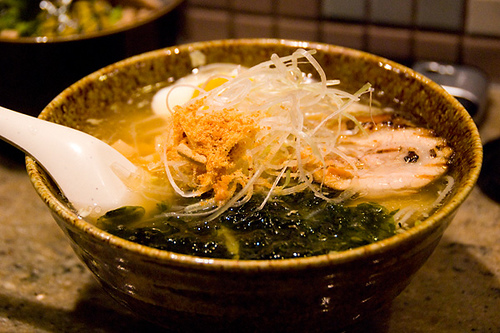
Shio ramen is probably the oldest of the four and is a pale, clear, yellowish broth made with plenty of salt and any combination of chicken, vegetables, fish, and seaweed. Occasionally pork bones are also used, but they are not boiled as long as they are for tonkotsu ramen, so the soup remains light and clear.
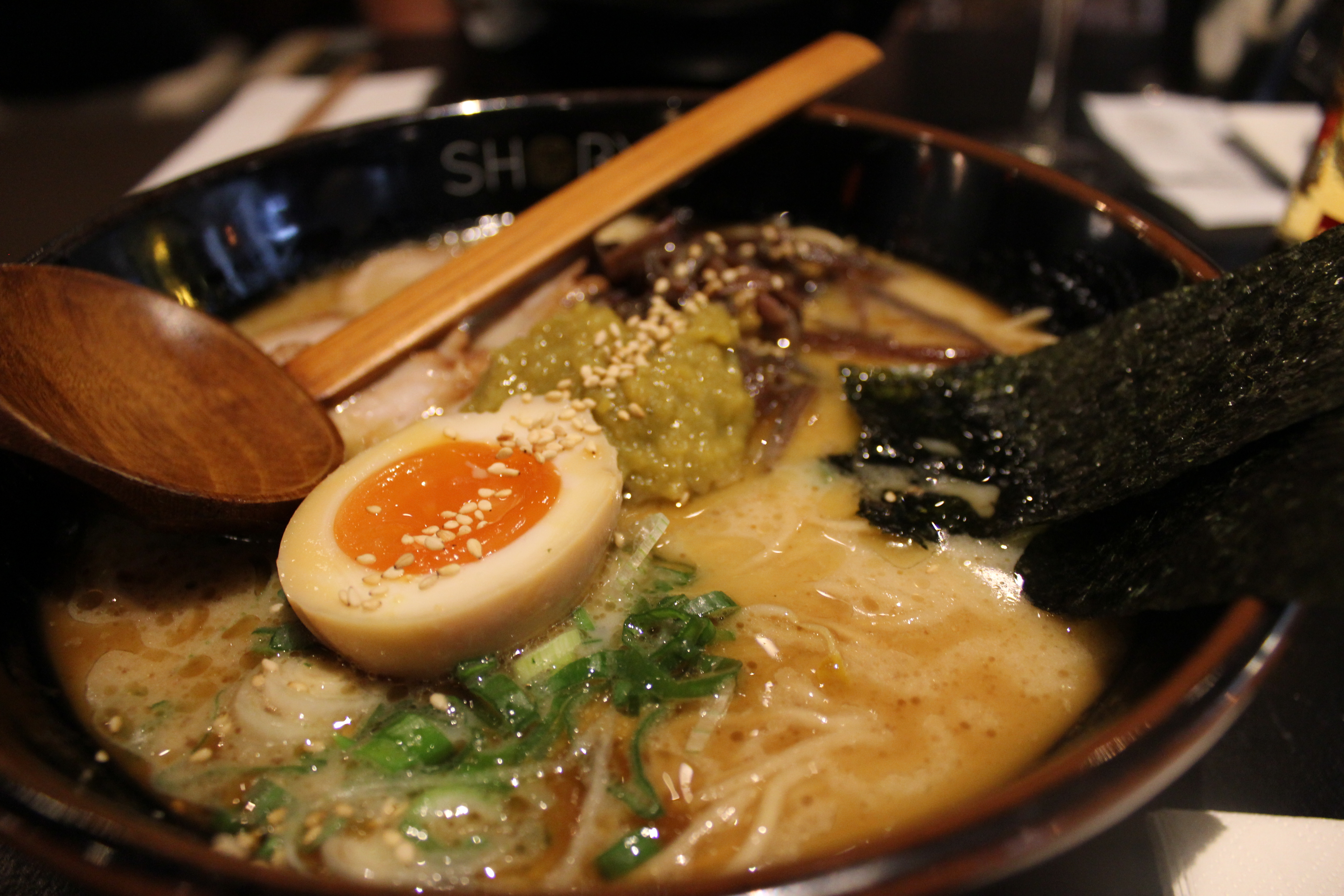
Tonkotsu ramen usually has a cloudy white colored broth. It is similar to the Chinese baitang and has a thick broth made from boiling pork bones, fat, and collagen over high heat for many hours, which suffuses the broth with a hearty pork flavor and a creamy consistency that rivals milk, melted butter or gravy (depending on the shop). Most shops, but not all, blend this pork broth with a small amount of chicken and vegetable stock and/or soy sauce.
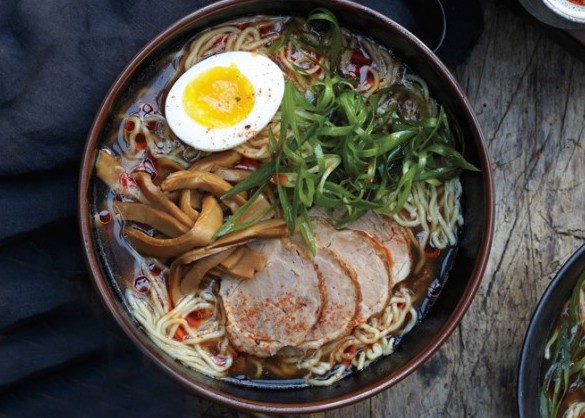
Shoyu ramen typically has a clear brown broth, based on a chicken and vegetable (or sometimes fish or beef) stock with plenty of soy sauce added resulting in a soup that is tangy, salty, and savory yet still fairly light on the palate. Shoyu ramen usually has curly noodles rather than straight ones, but this is not always the case.
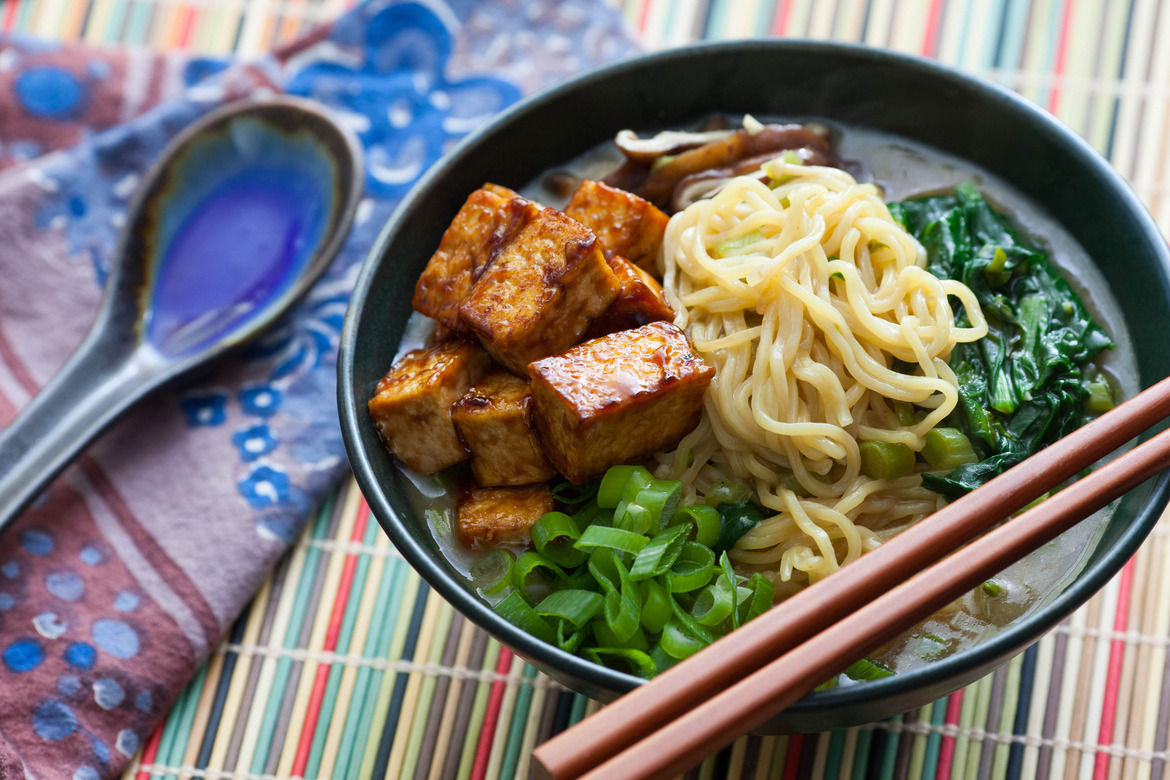
Miso ramen is a relative newcomer, having reached national prominence around 1965. This uniquely Japanese ramen, which was developed in Hokkaido, features a broth that combines copious amounts of miso and is blended with oily chicken or fish broth and sometimes with tonkotsu or lard – to create a thick, nutty, slightly sweet and very hearty soup. Miso ramen broth tends to have a robust, tangy flavor.
